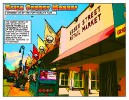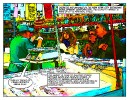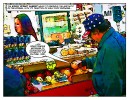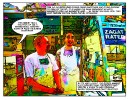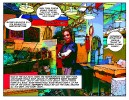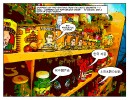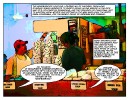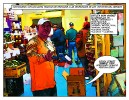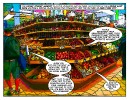Representation…, 2009
Representation, a Chronicle of the Essex Street Market
Paul Clay, 2009
A series of 44″x66″ digital prints on archival 100% cotton paper, using historical research, oral history, and the representational form of a comic book, to chart the sociocultural development of the Lower East Side through the story of the Essex Street Market.
A selection of the pieces will be on display, starting with the opening reception Saturday, December 12th, from 5pm-7pm in the North End of the Essex Market, 120 Essex St., New York City, and the exhibit will run through January 2010.
This project is made possible, in part, with public funds from the Manhattan Community Arts Fund, supported by the New York City Department of Cultural Affairs and administered by the Lower Manhattan Cultural Council, and with generous support from The New York City Economic Development Corporation and the Department of Small Business Services.
Project Description:
The comics are made from photos of actual people who work in and frequent the market,and include text in multiple languages, with both historical data, and information from oral histories, capturing a snapshot of a vibrant and volatile historical moment.
The Essex Street Market is a long standing center of everyday culture in the Lower East Side. It is unique on many fronts: for the products available, the atmosphere of the place, its inherent support for rapidly disappearing craft practices, and its tradition of multi generational handing-down of family business lore. Also, by its very layout, it supports high job density and the preservation of the aesthetic of the bodega, with its tradition of daily food purchase and simultaneous exchange of neighborhood, community and cultural information. The Essex Street Market is a vital business and cultural institution in the Lower East Side and this artwork highlights its special place within the community and the culture of New York City.
The neighborhood contains a diverse mix of cultures, from long standing Jewish residents to Puerto Ricans having arrived in the 60’s and 70’s, followed by Dominicans, and the expansion of Chinatown, not to mention local artists who settled in the area back when the rents were affordable, and the recent influx of Japanese and Koreans. Rapid gentrification over the recent past has created huge cultural flux and a wide range of levels of income among residents.
